Beautiful flora and fauna at Santa Fe Botanical Garden
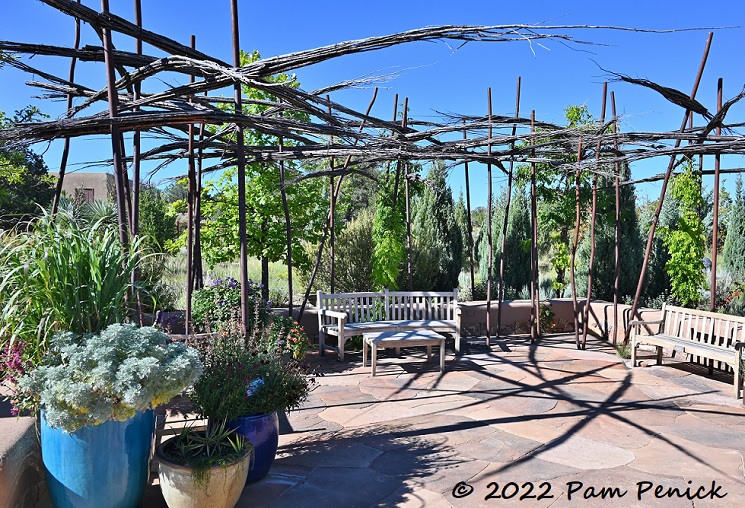
During our stay in Santa Fe at the end of August, I spent one morning at Santa Fe Botanical Garden. I first visited in 2016, three years after it opened and right before the opening of Phase 2, Ojos y Manos: Eyes and Hands. My 6-year absence meant I noticed significant growth among the garden’s trees and perennials, plus this time I got to see the newest section of the garden. But let’s start at the welcome ramada, a stylized version of the traditional shade structure of the Desert Southwest.
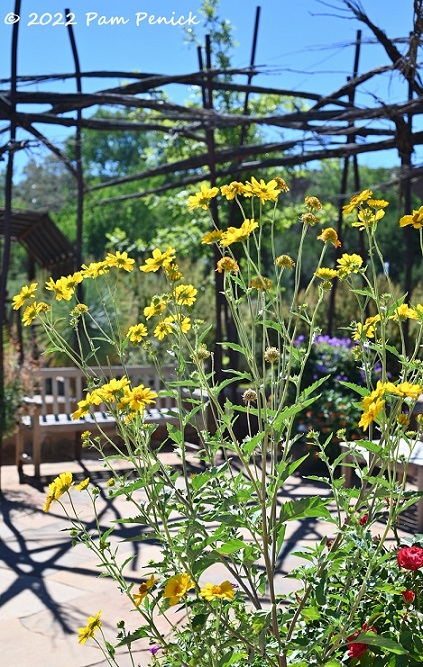
Late-summer perennials were blooming in pots on the patio…
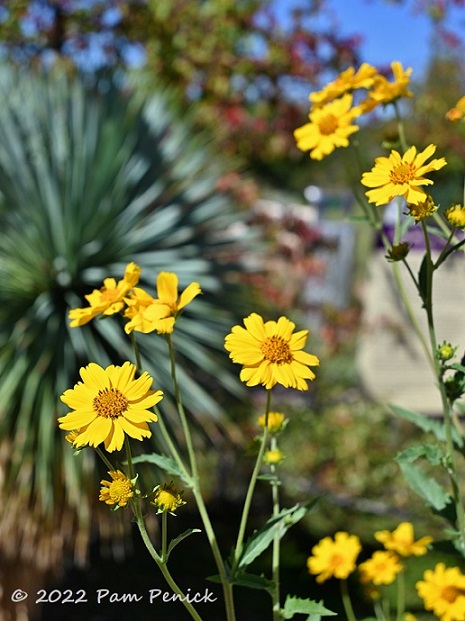
…their sunny yellow flowers glowing against a bright blue sky.
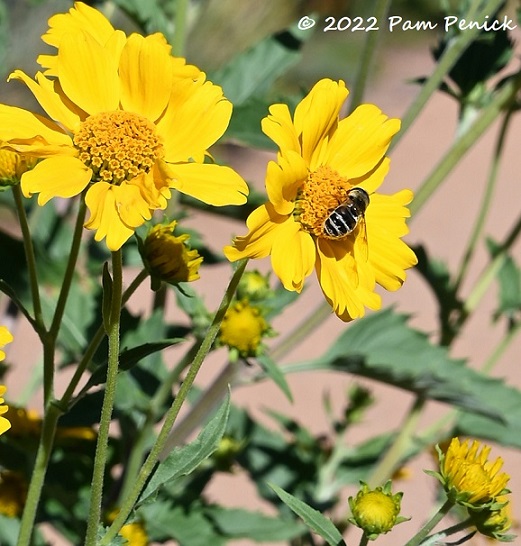
Bees were enjoying them too.
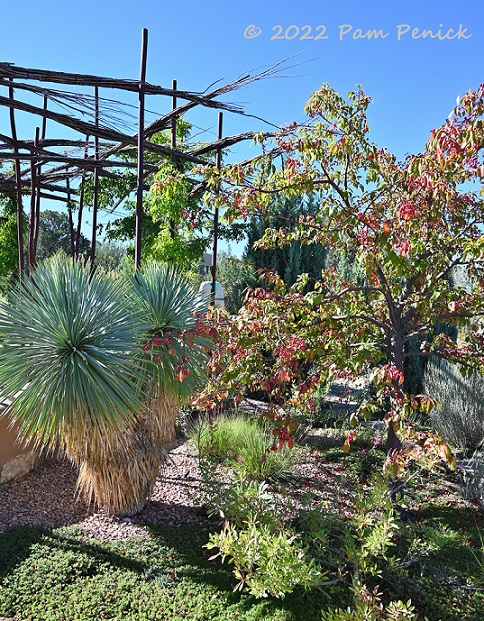
Big-headed Yucca rostrata and ‘Indian Magic’ crabapple make interesting bedfellows.
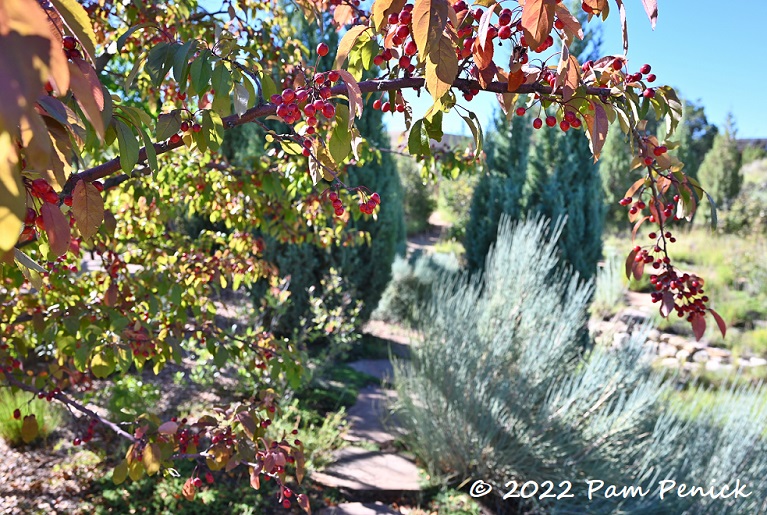
Red crabapple berries contrast with blue-green foliage.
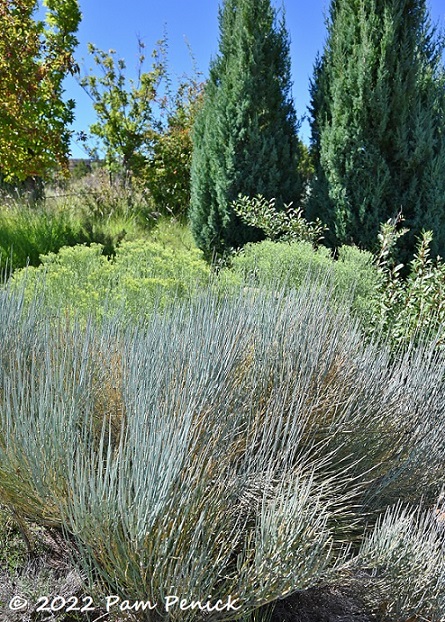
My favorite of the blue-greens — powder blue, really — is bluestem joint fir (Ephedra equisetina).
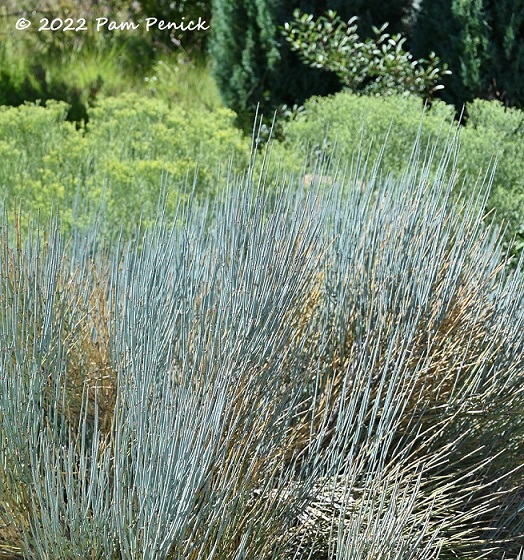
That upright, blue, needle-like foliage attracts me every time.
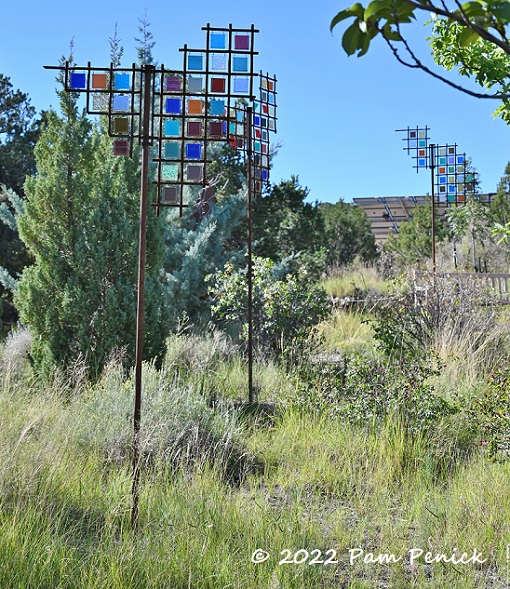
I expected to see new sculptures on display in the gardens. After all this is Santa Fe, an art-lover’s mecca. Here’s Wind Song, a steel-and-colored-glass sculpture by Greg Reiche.
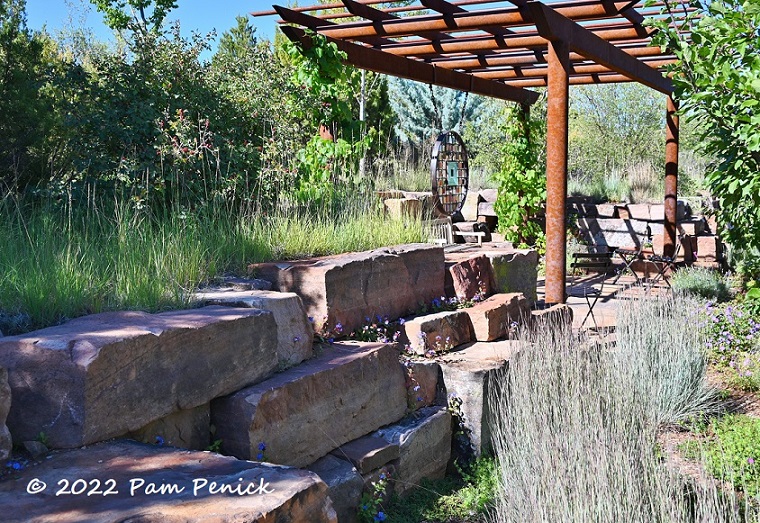
Another Reiche work hangs from a substantial steel-pipe pergola shading a walled patio.
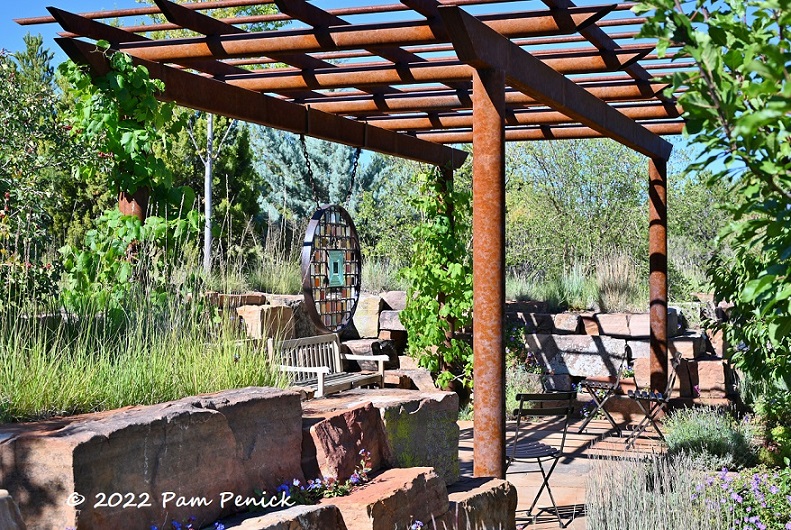
This one is called Pollinator.
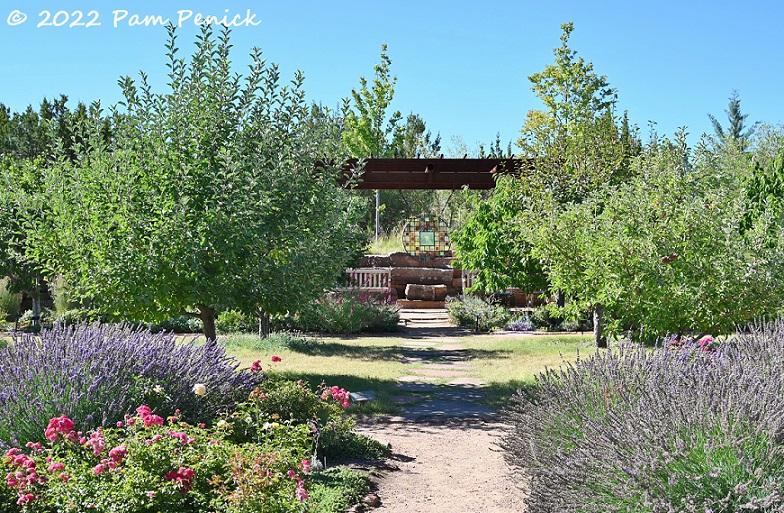
The sculpture acts as focal point for a long view through an orchard of apple and peach trees framed by lavender and roses.
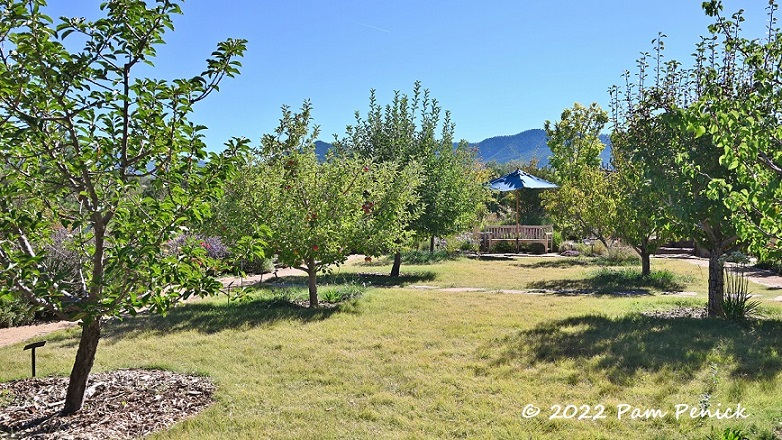
Along the cross axis, a bench and umbrella offer another place to sit and enjoy the view.
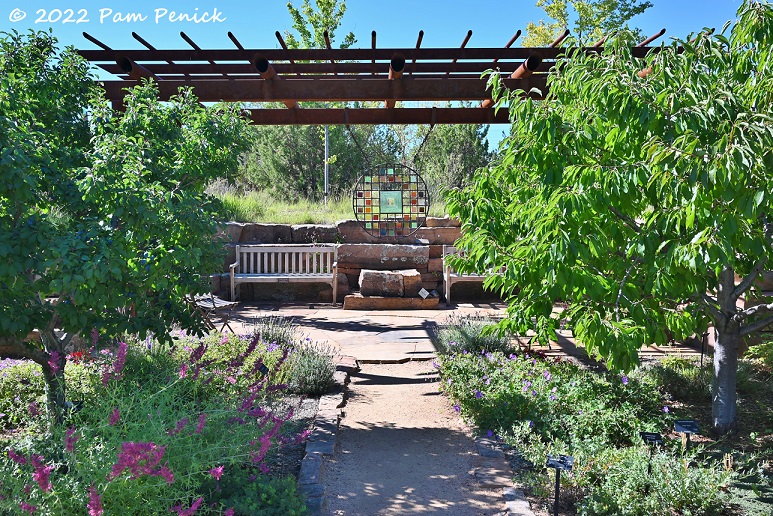
But let’s go straight on to the pergola patio.
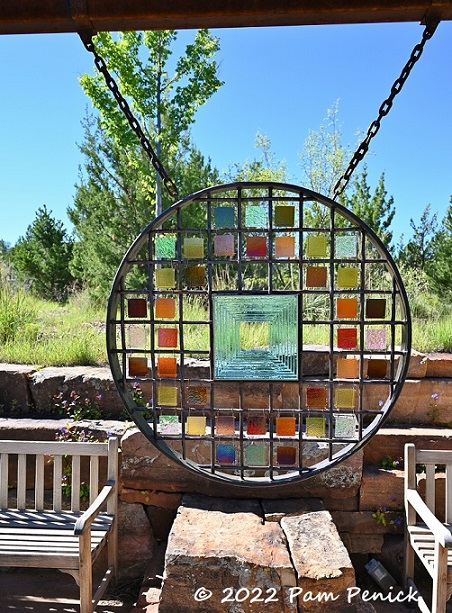
Pollinator plays with light via colored squares of glass.
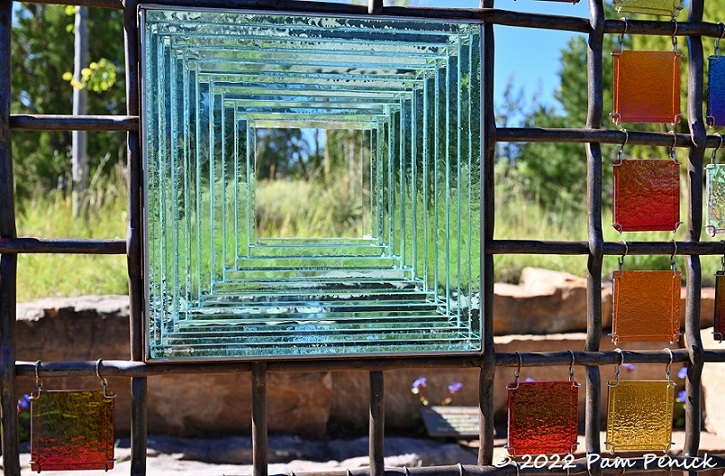
The center square entices you to peep through it.
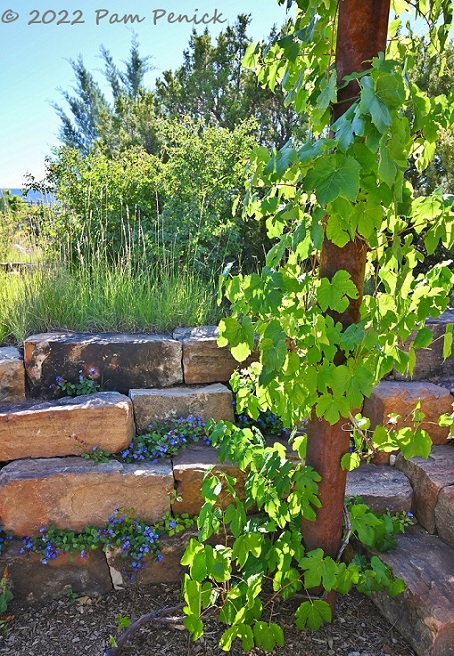
Grapevines climb rusty steel posts, filtering the light in their own way.
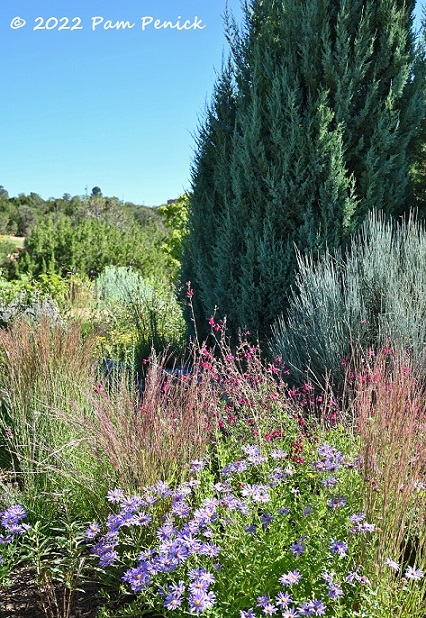
This scene reminds me of Austin in October, thanks to asters, salvias, and grasses.
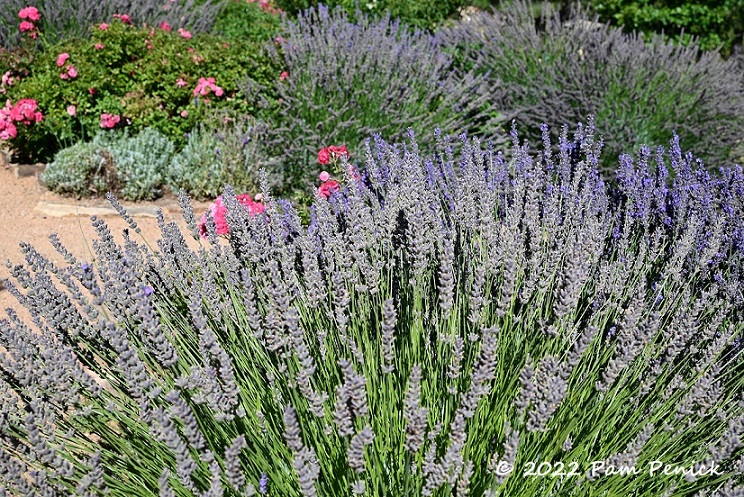
A fragrant planting of lavender and roses
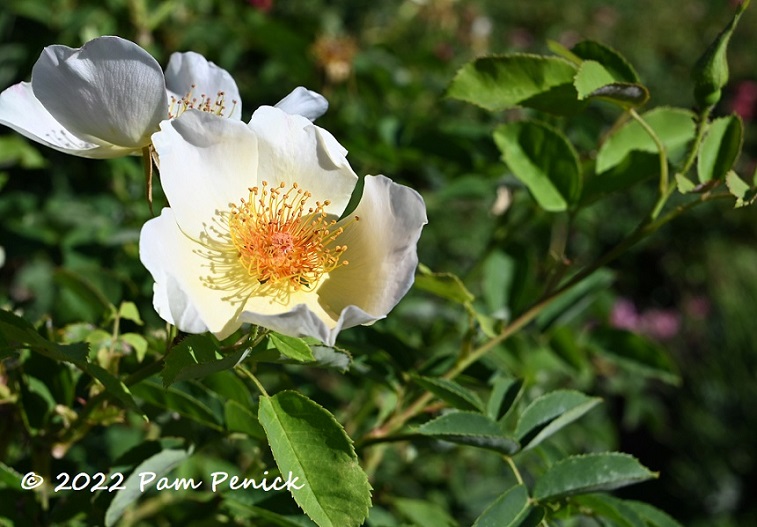
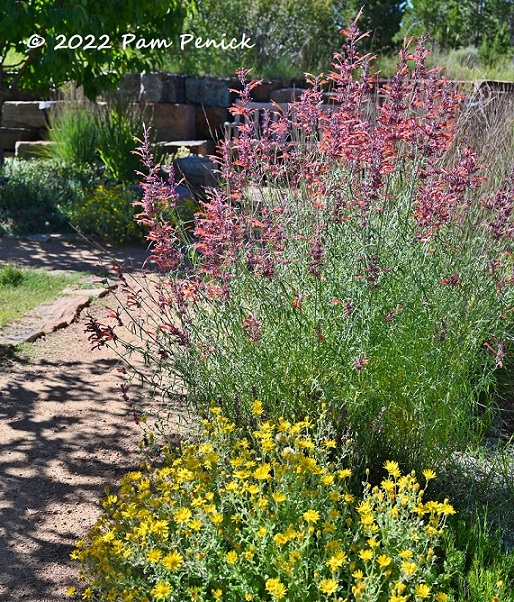
Agastache, a plant I wish I could grow better in humid, subtropical Austin
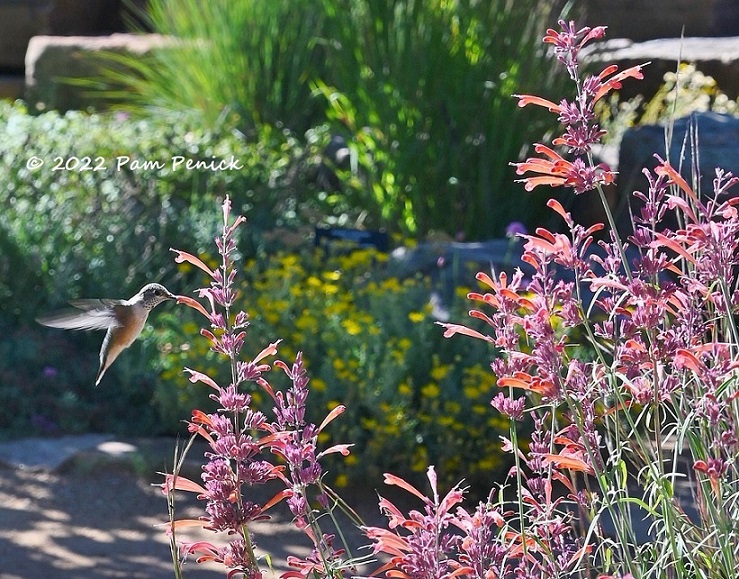
While I crouched down to photograph it, a hummingbird zoomed in and started sipping from its flowers.
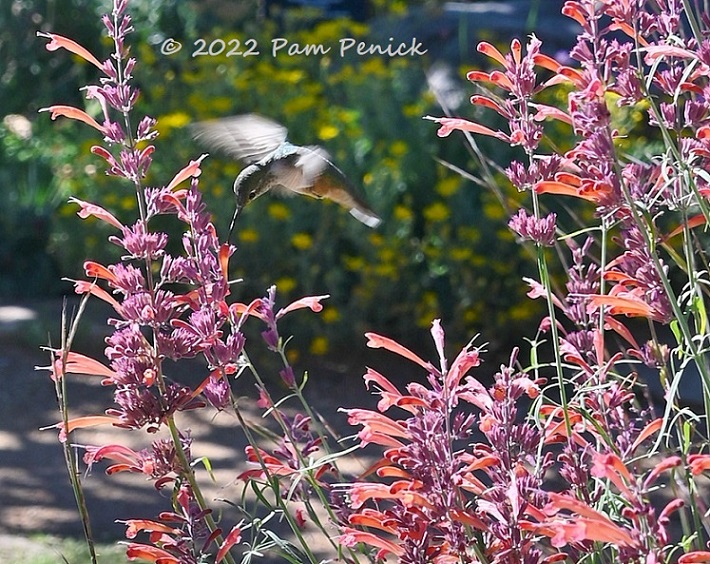
There’s a reason agastache is called hummingbird mint.
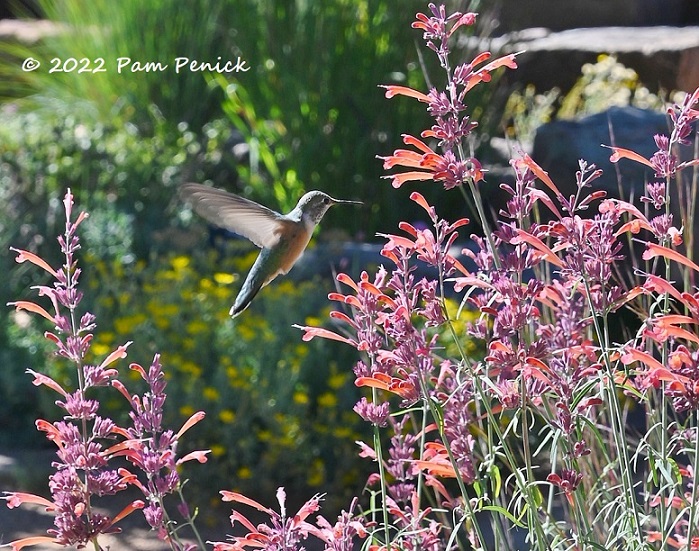
He or she wasn’t shy at all, and we communed (well, I did) for several minutes.
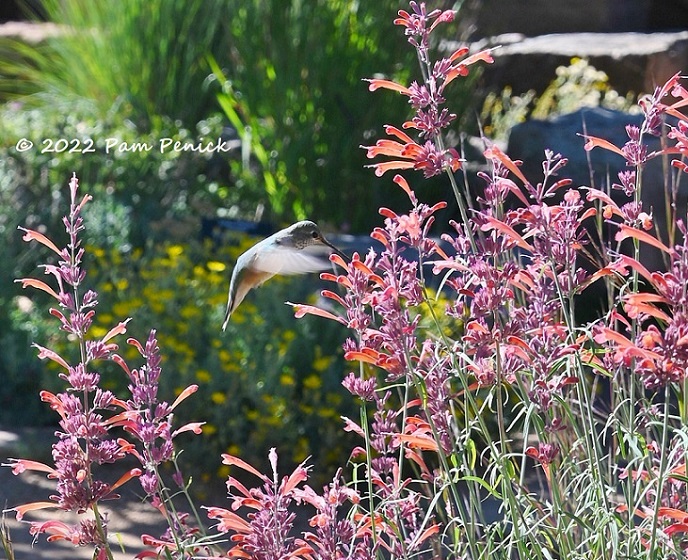
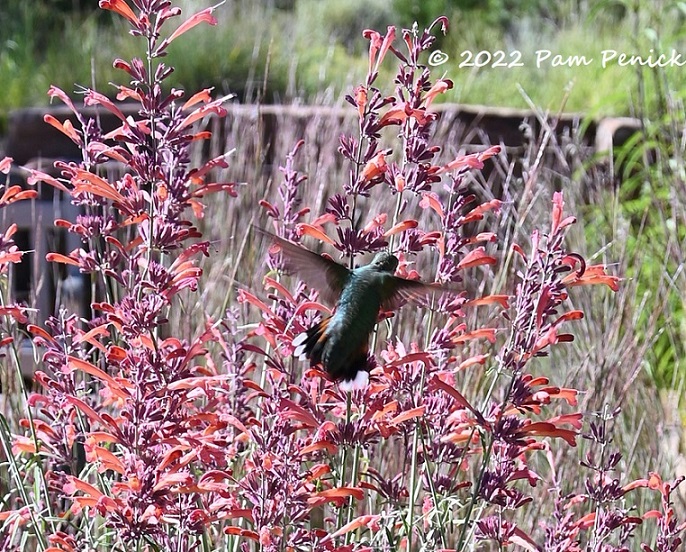
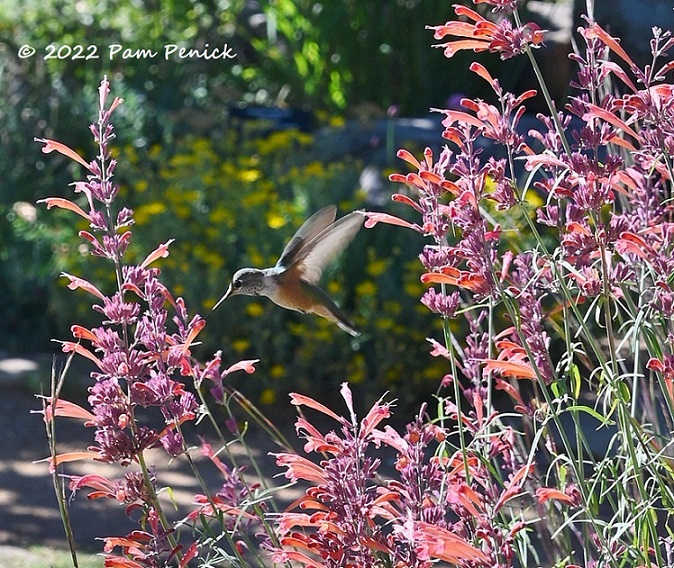
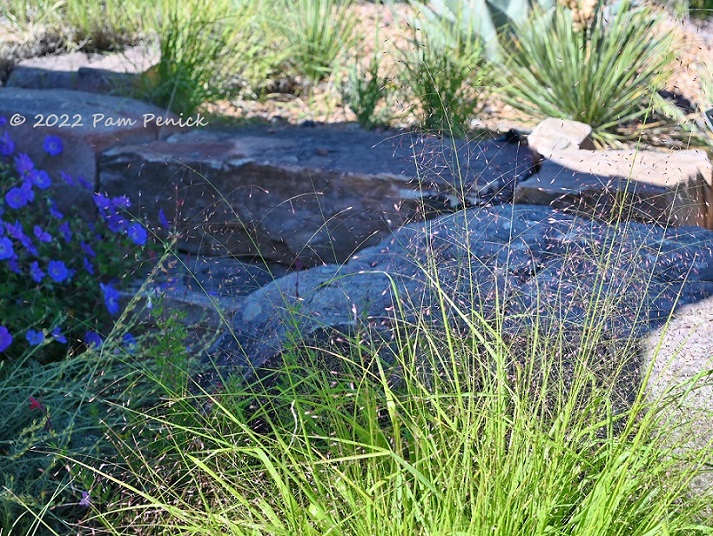
A sparkling grass in bloom
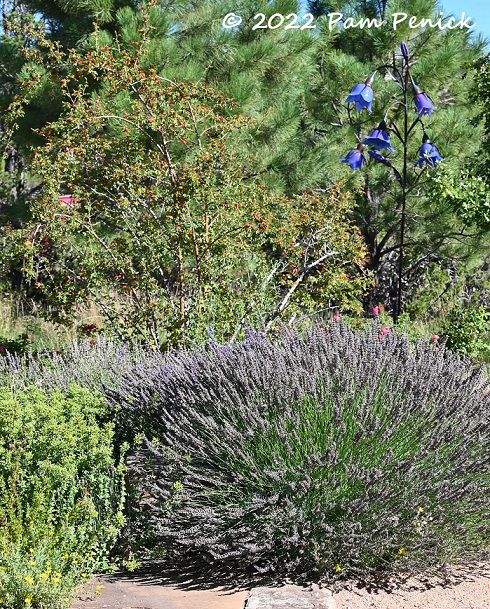
Harebell, a lamp-like glass sculpture by Elodie Holmes, towers over a mounding lavender.
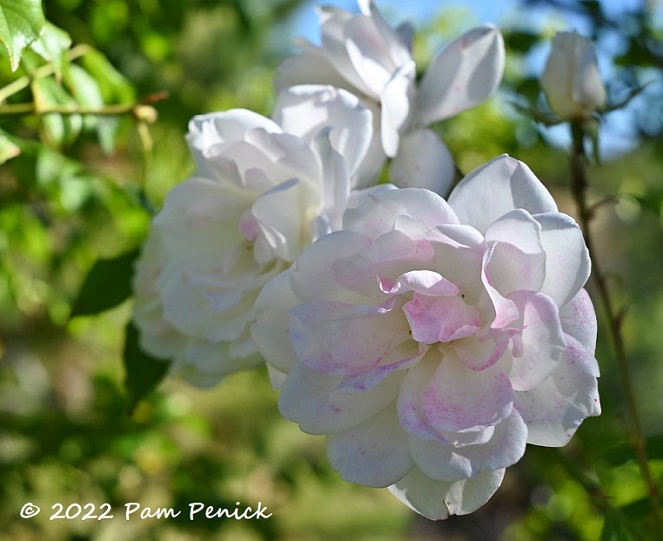
More blushing roses
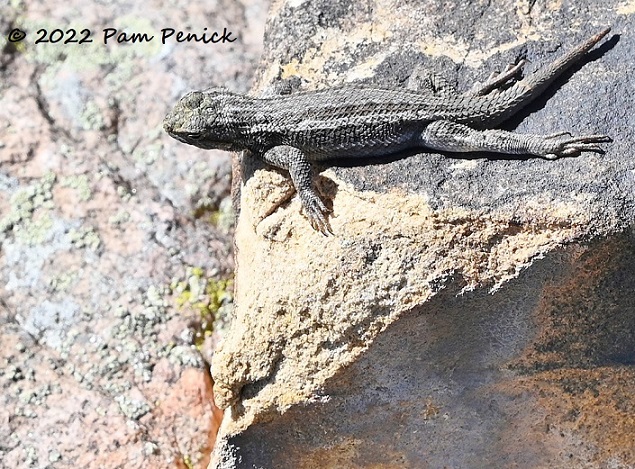
And a cute lounging lizard
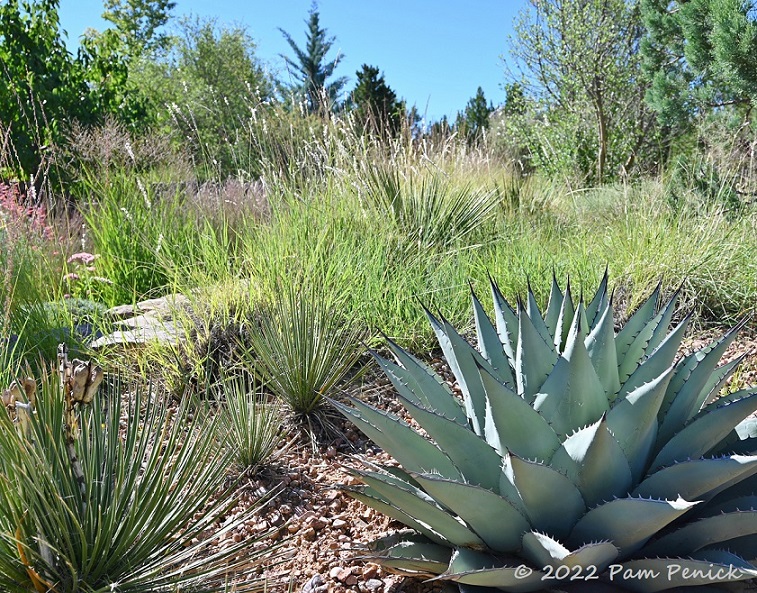
Havard’s agave, one of the most cold-tolerant agaves, adds heft to a mass of light-catching grasses.
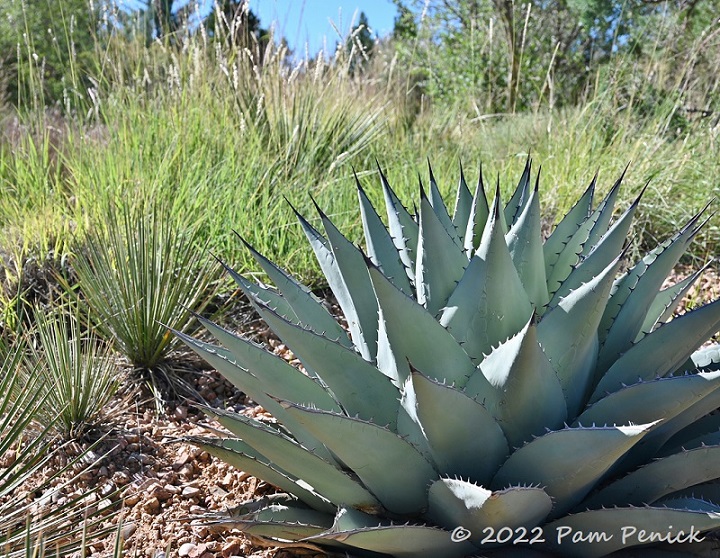
A closer view to enjoy those handsome black spines and teeth
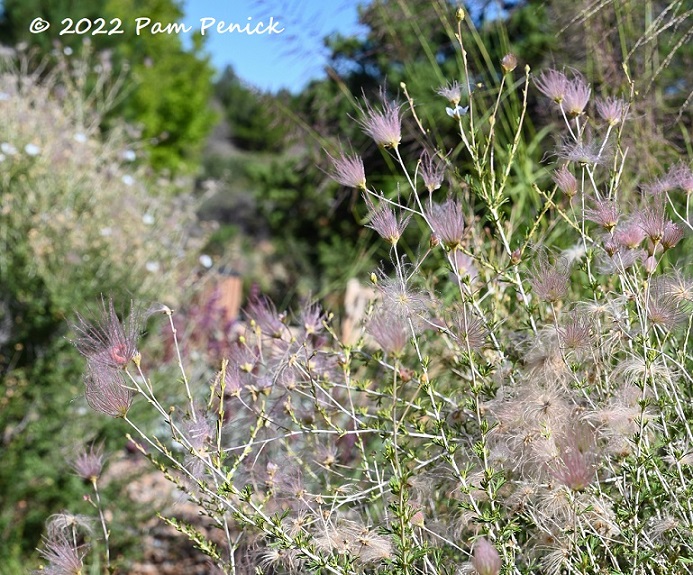
Apache plume (Fallugia paradoxa), one of my favorite arid-climate shrubs for its white flowers and pink, feather-duster seed heads that catch the light
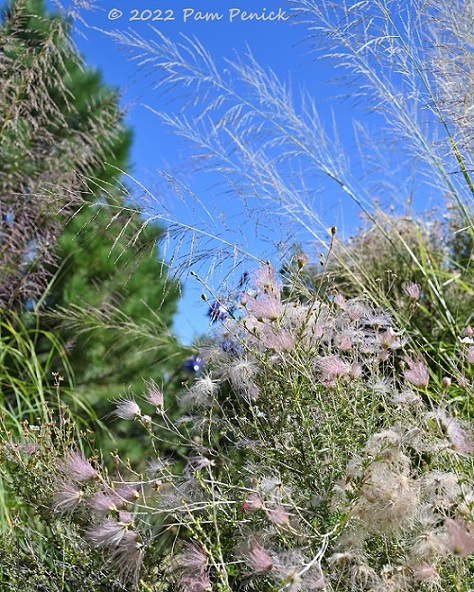
Here it is with the plumes of a tall ornamental grass.
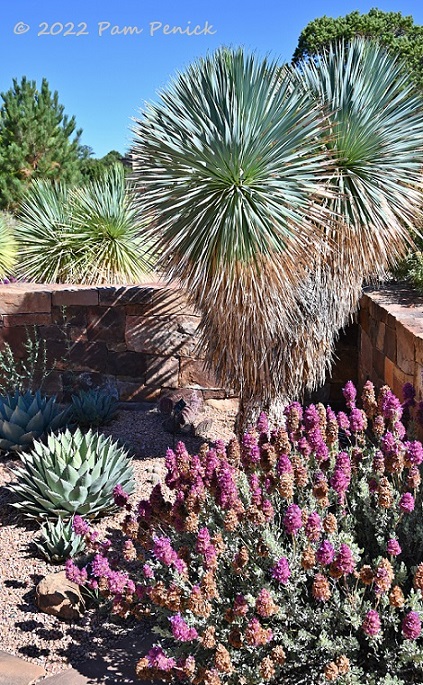
Really, it’s hard to choose favorite desert plants when you see a combo like this: Yucca rostrata, Mojave sage (Salvia pachyphylla), and Havard’s agave.
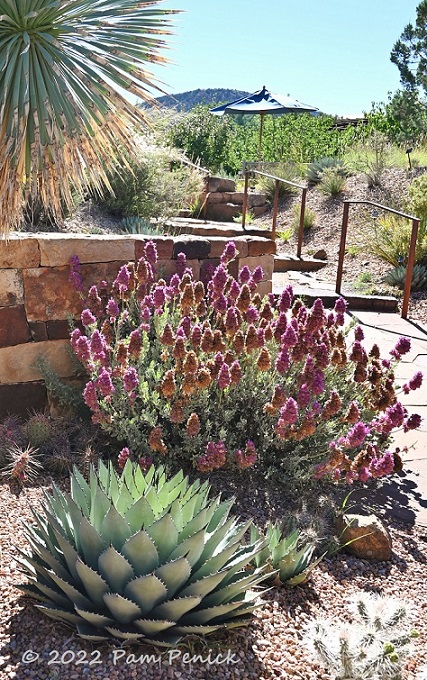
Havard’s agave and Mojave sage
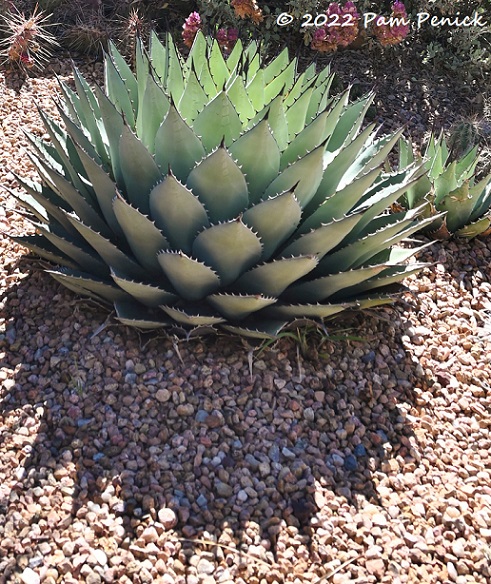
Sunburst shadow
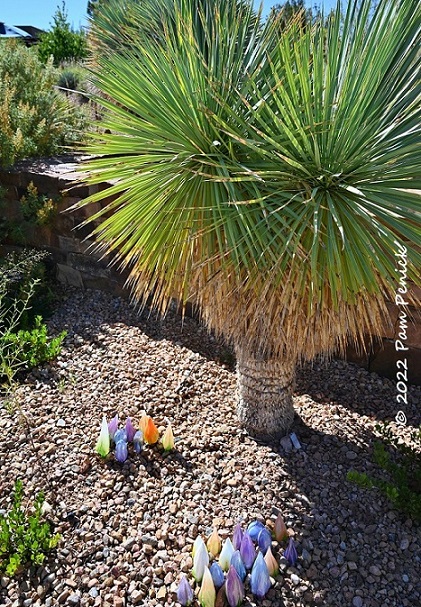
Nearby, delicate glass bulbs — Crocus Installation by Elodie Holmes — sprout from the gravel around a Yucca rostrata.
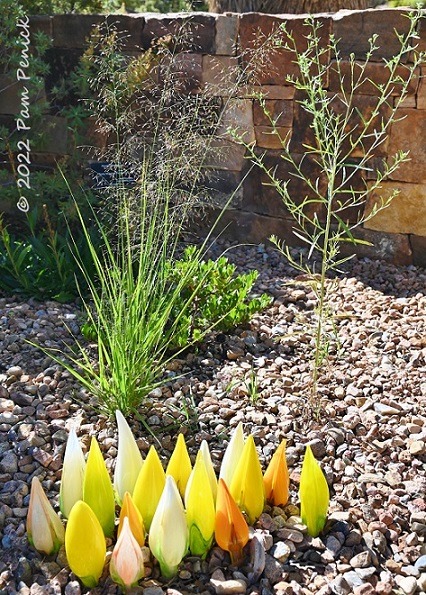
They remind me a little of Marcia Donahue’s bulbs, in glass rather than clay.
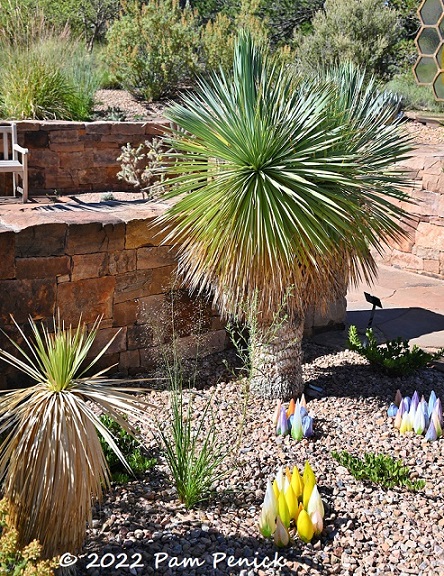
They’re arranged in tight, colorful clusters, like real bulbs.
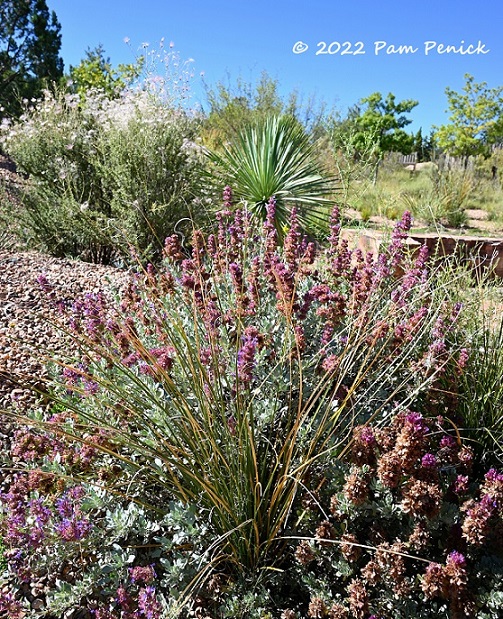
More Mojave sage, with bear grass or something in the middle
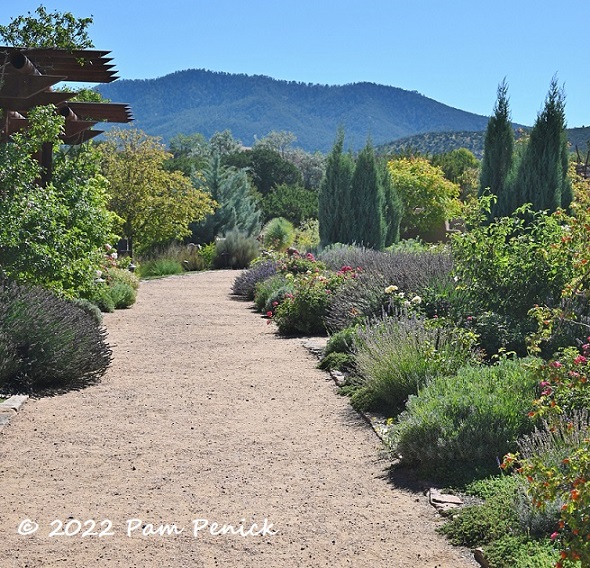
Looking along the rose and lavender walk, you see the Sangre de Cristo Mountains in the distance.
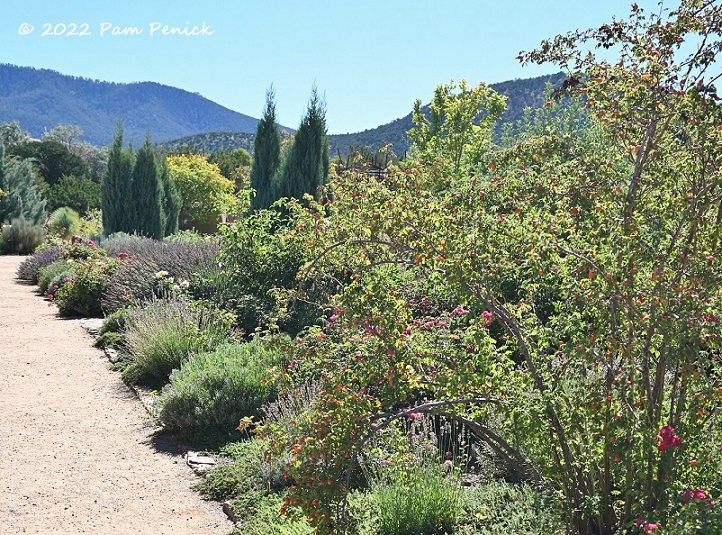
A beautiful backdrop for the garden
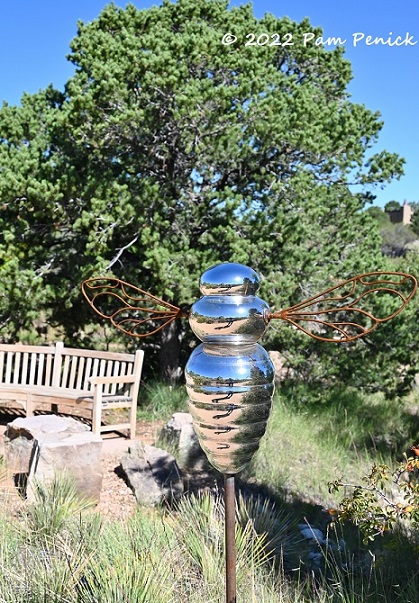
Reflection, a silver bee sculpture by Elodie Holmes in collaboration with blacksmith Caleb Smith, is posed upright like a human torso.
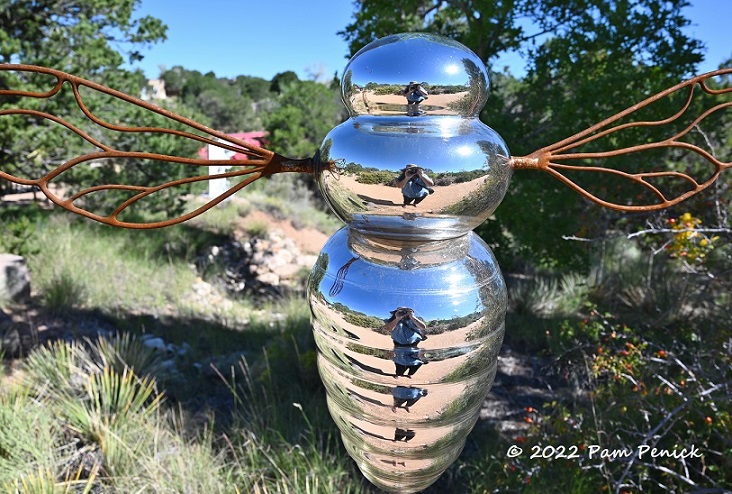
We’re meant to see ourselves in the bee, literally and figuratively.
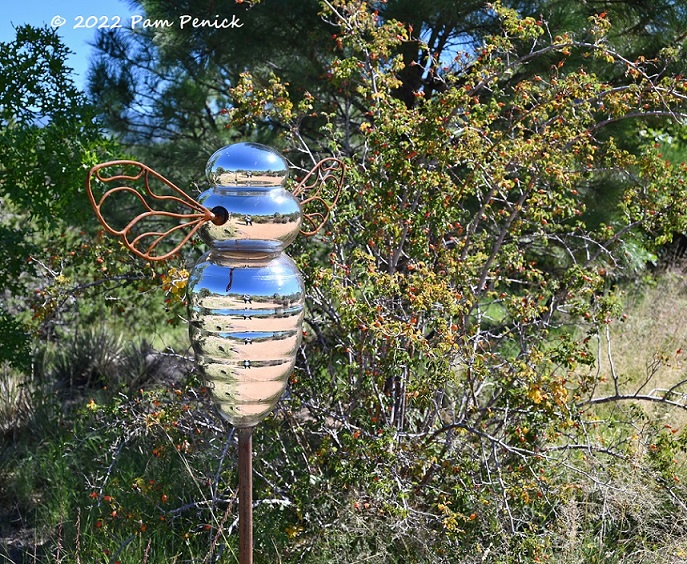
I’ll end Part 1 of my SFBG visit here. Come back for Part 2 tomorrow!
Up next: Part 2 of my visit to Santa Fe Botanical Garden, including an amphitheater and culinary and educational garden. For a look back at the doors, gardens, and art along Santa Fe’s Canyon Road, click here.
__________________________
Digging Deeper
Come learn about gardening and design at Garden Spark! I organize in-person talks by inspiring designers, landscape architects, authors, and gardeners a few times a year in Austin. These are limited-attendance events that sell out quickly, so join the Garden Spark email list to be notified in advance; simply click this link and ask to be added. Season 8 kicks off in fall 2024. Stay tuned for more info!
All material © 2025 by Pam Penick for Digging. Unauthorized reproduction prohibited.


It’s a very attractive garden, if seemingly a little short on trees. The crocus display was surprising and interesting. Your hummingbird pics are great – it takes a telephoto lens and a great deal of luck for me to get photos half that good of those active creatures.
In person I felt they have a lot of trees, although the garden is still young, and the trees aren’t all tall yet. But there are lots of fruit trees in the main garden, and surrounding that are evergreens — pines, junipers, etc. The hummingbird photo shoot lasted several amazing minutes, where it went about its business and let me take all the photos I wanted. It was magical!
You outdid yourself catching that hummingbird so many times! Congratulations!
Thanks, Peter. You wouldn’t believe how many photos I threw away too. 😉
Thanks for reminding me of my visits there in the past. It is a wonderful, very soulful, place.
My pleasure, Dorothy. Part 2 coming up soon!
Lovely photos and good memories. I was there just before you, Aug. 5. It was my first time and I really enjoyed seeing so many plants that we can grow too. As climate change pulls their climate our direction, we would do well to study what they grow.
That’s an interesting perspective, Paula, as Central Texas gets hotter and drier. Of course Santa Fe enjoys that high elevation and dry air. It’s just harder to figure out what will thrive anywhere these days, isn’t it?
I do see Agastache for sale in our area, but it doesn’t really do well?
‘
Will Mojave Sage grow here? I don’t recall ever seeing it for sale locally.
Thanks
Gaye, when I trialed a bunch of agastache a number of years ago, some of them did really well for one or two years and then up and died. So I found them very short-lived. But they were beautiful for those one or two years!
I imagine Mojave sage wouldn’t thrive here, but you never know until you try! You might have to go to Santa Fe to find any though. I’ve never seen it here either.
Thanks, Pam.
I didn’t see any in the photos, but I remember seeing tons of Russian Sage in the Santa Fe area. That ethereal pale violet blue is so beautiful! I’d be afraid to try it here, though. But I may try… Let me know what you think. San Marcos area. Thanks for your great blog.
I didn’t see any Russian sage at the garden this time either, although I did see it elsewhere in town. I’ve seen it from time to time in Austin. I suspect that, like agastache, it does fine for a year or two before our relentless humidity causes early demise.
How I love to see desert gardens full of plants so uncommon to me in the Midwest. Must visit Santa Fe someday. I’m surprised to hear that hummingbird mint doesn’t do well for you. I have some luck with it, but it does tend to be short lived here in Ohio. But it’s easy to regrow from seed, so I just plant more.
Maybe I just need to think of it as an annual, and replant a few each year. They are so beautiful that I think it would be worth it.